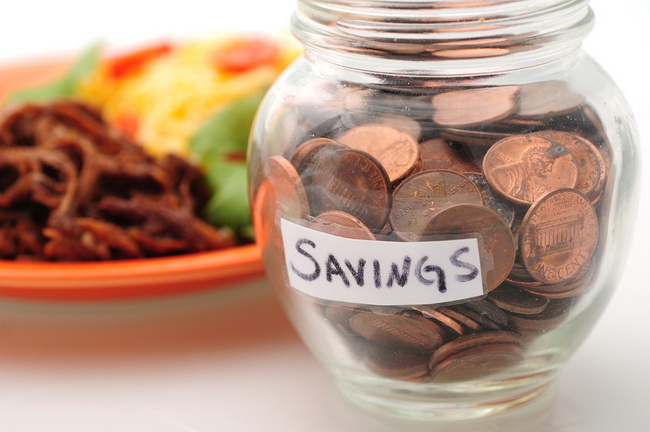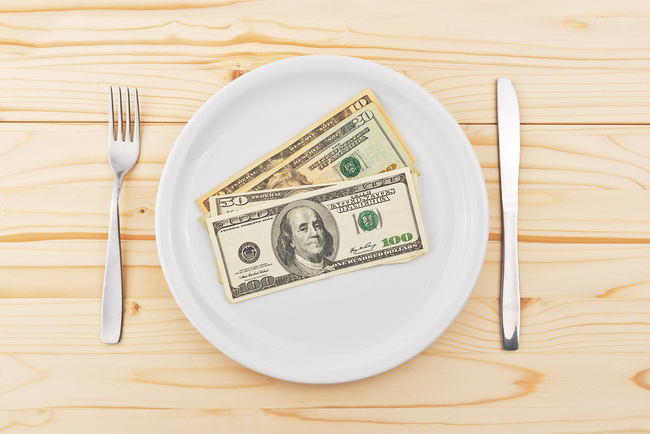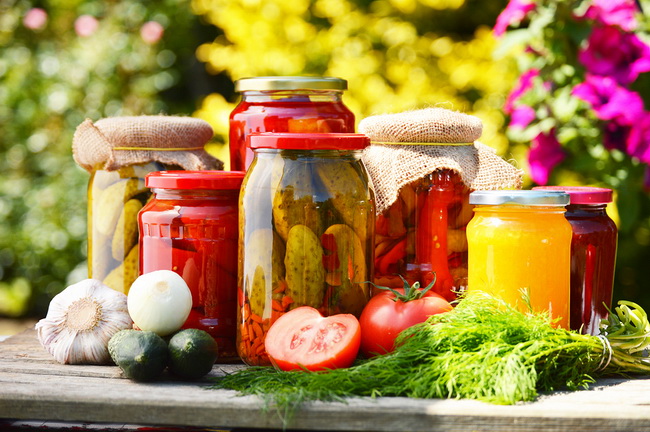- Make It Yourself Lavender Heart-Shaped Bath Bombs!
- 20 Things You Never Knew About “Down There”
- 12 Best Foods For Those Suffering From Arthritis Pain
- 12 Personal Hygiene Mistakes Almost Everyone Makes (Mom Never Told You About #4!)
- 15 Medicinal Plants And Herbs From The Cherokee People
- 12 Mind-Blowing Benefits Of Drinking Coconut Water During Pregnancy
- 12 Outstanding Winter Foods That Won’t Fatten You Up Like A Christmas Turkey
How To Save Real Money On Real Food

Photo credit: bigstock.com
Do you find yourself wondering how many people seem to manage to eat so well when food is so expensive? OK, not just food, everything seems expensive lately, doesn’t it? After you pay for your mortgage, your cars, the insurance, clothes, utility bills, and gas, there doesn’t seem to be much left to buy food.
Many people believe that in order to eat healthy they have to shop at those “organic” stores and spend huge amounts of money. Well, all you really need is to feed your family a natural, unprocessed food diet.
Getting some real savings on real food isn’t nearly as hard as you think; especially once you learn a few tricks.
1. Make a Meal Plan
OK, this probably isn’t anything new, but how many of you actually do it? This wouldn’t turn up on so many “save money” sites if it didn’t work. Planning your meals in advance will save you money because you aren’t running to the store to buy this and that (generally at full price). Make it easy on yourself and check out some of the internet sites that list cheap meals along with their ingredients. Plan a week (or more) in advance but always leave a little wiggle room for those unexpected nights when a flat tire or bad weather has you coming home too late to make your planned meal. Read also about 20 items you need on your next grocery list.
2. Keep Food Inventories
All your efforts at saving pennies won’t add up if you end up throwing away most of what you bought! The old saying “out of sight out of mind” certainly applies when it comes to your fridge or freezer. (Until they start to smell!) Keeping an inventory of items will keep you from throwing out food. Generally, put items you bought first and are the most perishable at the top of the list and work down from there.
3. Use the Clearance Rack
Don’t be shy! Almost every single grocery store in America has a clearance rack (look at the back of the store). You will find everything there from day old produce to toilet paper that someone opened to a bag of dog food that had a small hole in it, and even shampoo and deodorant that didn’t sell well.
Continue to Page 2

Photo credit: bigstock.com
4. Buy Dry Beans Instead of Canned
This can save you some major money over time. Simply buy dry beans in bulk and use a slow cooker to cook them as you need them. Simple, natural, and cheap! The same goes for bagged rice. Many stores sell rice in bulk. Buy your own container and store your rice instead of buying those small, prepackaged plastic bags.
5. Stop Buying Fruit Juice
Most of you have already stopped buying sodas and energy drinks, but why not save even more money by ditching the juice? You can make your own, fresh and natural, from fresh organic fruit. This is a great way to use up fruit that is about to go bad or you can enjoy juice when fruit is in season and is super cheap. Read more how to start juicing.
6. Stop Wasting Money on Paper Towels
Seriously, you can go through a roll of paper towels in a matter of days and that really adds up! Simply make a stash of washable rags to clean up spills. Use old kitchen towels, cloth napkins, or some cut up T-shirts.
Continue to Page 3

Photo credit: bigstock.com
7. Buy Produce in Season
When fruits and vegetables go way down in price, it’s because they are in season and there is a great deal of them available. This also means that, more than likely, the produce was grown locally. This is the time to buy and enjoy them. Think pears and apples in fall, veggies such as cabbage and broccoli in the winter, asparagus and strawberries in the spring, and corn, peaches, and plums in the summer.
8. Cook Once, Eat Twice
This is a great way to save money so that on those nights when you get home too late to cook your planned meal: you can just go directly to the freezer and pull out a meal that is already made. Make enough spaghetti sauce for two meals and freeze half, or bake two chickens and freeze one. This way, no one is tempted to order pizza because there is no time to cook. Put that spaghetti sauce in a pan, the noodles in the pot, make a salad, and you are good to go in 30 minutes or less.
9. Buy Whole Chickens
Learn how to cut up a chicken and save some serious bucks. You will always be able to buy a whole chicken for much less than the cut up pieces. Cut and bag similar pieces (all breasts in one bag, thighs in another, etc.) so you can pull out exactly what you want when you are ready for it.
Continue to Page 4

Photo credit: bigstock.com
10. Save the Bones
Never, ever, throw out carcass bones! Bones will make the best soups and broths you have ever tasted for next to nothing! Keep a bag in the freezer just for bones (separate by animal; chicken in one bag, beef in another, etc.) and use them to make soup. All you will need to add is some vegetables and you have a healthy, fantastic tasting meal!
11. Think of Meat as a Condiment
Instead of planning a meal around meat, think of it as something on the side. Try homemade pizza with leftover chicken pieces or noodles in pesto sauce with a few pieces of Italian sausage. This will certainly be a lot more inexpensive than serving roast beef or sausage with a bit of noodles on the side.
SEE ALSO: 5 Super Easy Ways to Eat Organic on a Budget
12. Buy in Bulk
Buying items that are on sale or clearance is a great way to save money. As long as these aren’t perishable items, buying as much as you can when the price is really low is a smart way to save money. Buying in bulk is yet another way to save some bucks. Many of those bulk stores (such as Sam’s Club or Costco) really do offer savings because you buy in bulk. Save even more money by splitting the membership fees with a friend. If you find a great price on an item, but don’t want to buy enough to supply you for a year, split the cost with a friend. You can also save a bit more by carpooling and going grocery shopping with a friend.
Every little bit adds up. Imagine if you only saved 10 dollars per week by following some of the advice here. 10 dollars doesn’t sound like much in today’s world, but 10 dollars each and every week is 520 dollars in one year. In 5 years, that’s $2,600 bucks! That’s not chump change! And we are only talking 10 dollars; imagine if you saved 20 dollars, or even 50 dollars per week?
































